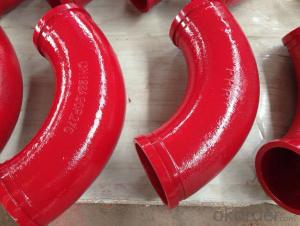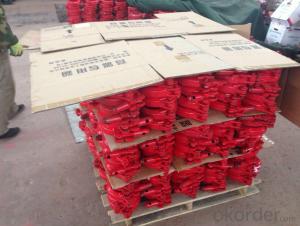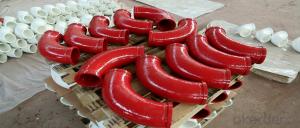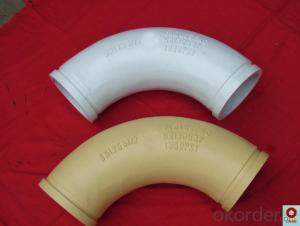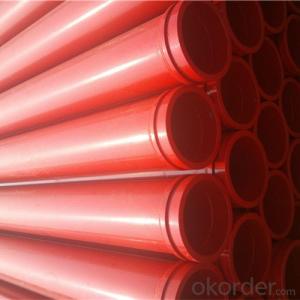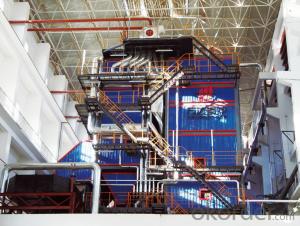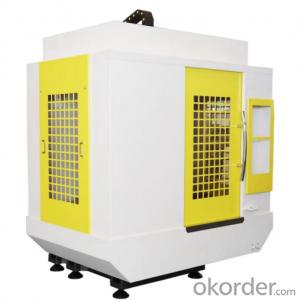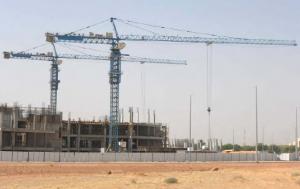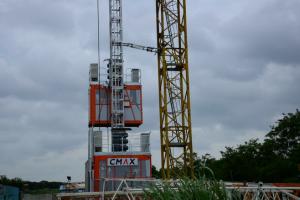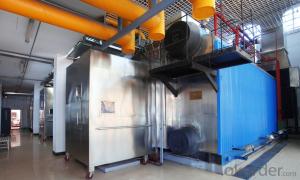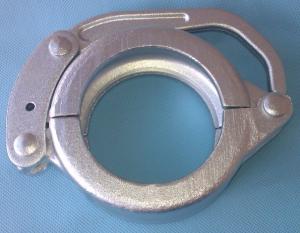CONCRETE DELIVERY ELBOW PM TYPE 90DEG R275 DN125
- Loading Port:
- Tianjin
- Payment Terms:
- TT OR LC
- Min Order Qty:
- 100 pc
- Supply Capability:
- 10000 pc/month
OKorder Service Pledge
OKorder Financial Service
You Might Also Like
concrete pump elbow table
Wear-resistant Single or Double Concrete Pump Elbow | |||||||
Type | Singe Elbow | Double Elbow | |||||
Model | DN125 | DN150 | DN175 | DN125 | |||
Material | Casting Steel ,ST52 | Inside | 40Cr | Outside | |||
Size | R275*90° | R275*90°+110 | 36° | F2000 | R275*90° | R275*90°+110 | |
R275*45° | R275*90°+211 | R400*30° | A3000 | R275*45° | R275*90°+211 | ||
R275*25° | R275*90°+411 | R400*45° | 471B | R275*25° | R275*90°+411 | ||
R275*20° | R275*90°+424 | R400*30° | 571B | R275*20° | R275*90°+424 | ||
R275*15° | R275*45°+170 | R488*90° | A1000 | R275*15° | R275*45°+170 | ||
R180*90° | R275*45°+310 | R500*90 | C1000 | R180*90° | R275*45°+310 | ||
R232*60° | R275*45°+310 | R280*90° | B2000 | R232*60° | R275*45°+310 | ||
R240*36° | 20°Lengthen | R240*36° | 20°Lengthen | ||||
R240*30° | 25°+740 | R240*30° | 25°+740 | ||||
R240*15° | 40°Zoomlion | R240*15° | 40°Zoomlion | ||||
R385*29° | R385*29° | ||||||
R315*33° | R315*33° | ||||||
Technic | Forged | ||||||
Average life | 25,000cubic | 50,000cubic | |||||
Appliciation | Used in concrete transport in construction work | ||||||
1.product profile:The double layer concrete pump elbow is developed by ourselves through new
technology and process.
2.characteristic:the inner layer of this concrete pump elbow undergoes heat treatment,and then the rigitiry can reach 62-65HRC.
3.characteristic:the outer layer of the concrete pump elbow possess good toughness properties
to protect the inner layer,so the security of the elbow is improved.
4.life:the experiment done abroad shows that the life of our concrete pump elbow can reach 35000-50000cbm,got the customers' praise
5.Beside the double layer concrete pump elbow,we produce all kinds of concrete pump parts,
straight pipe hose flange coupling and so on.
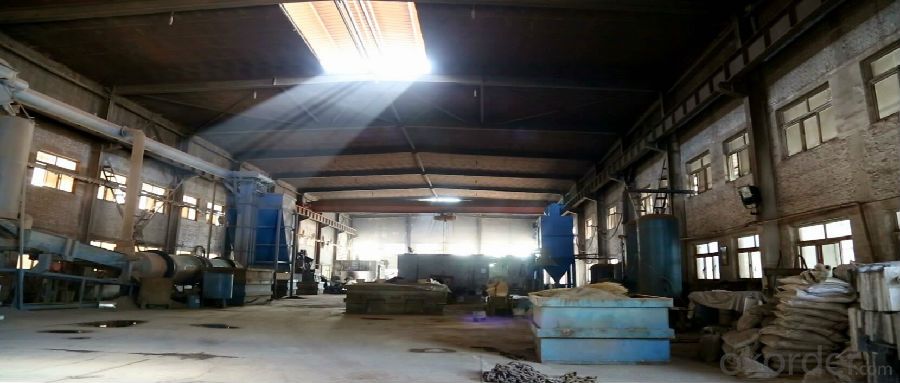
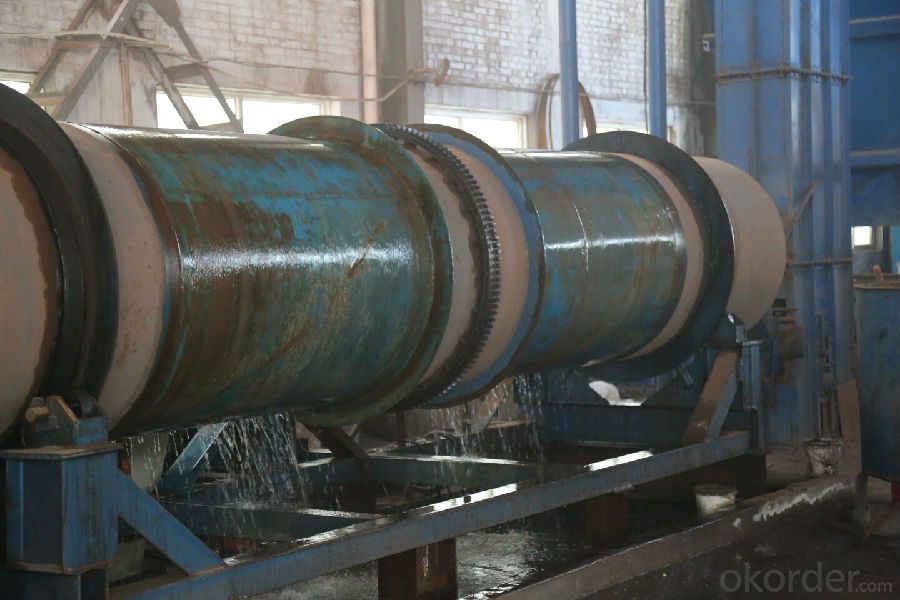

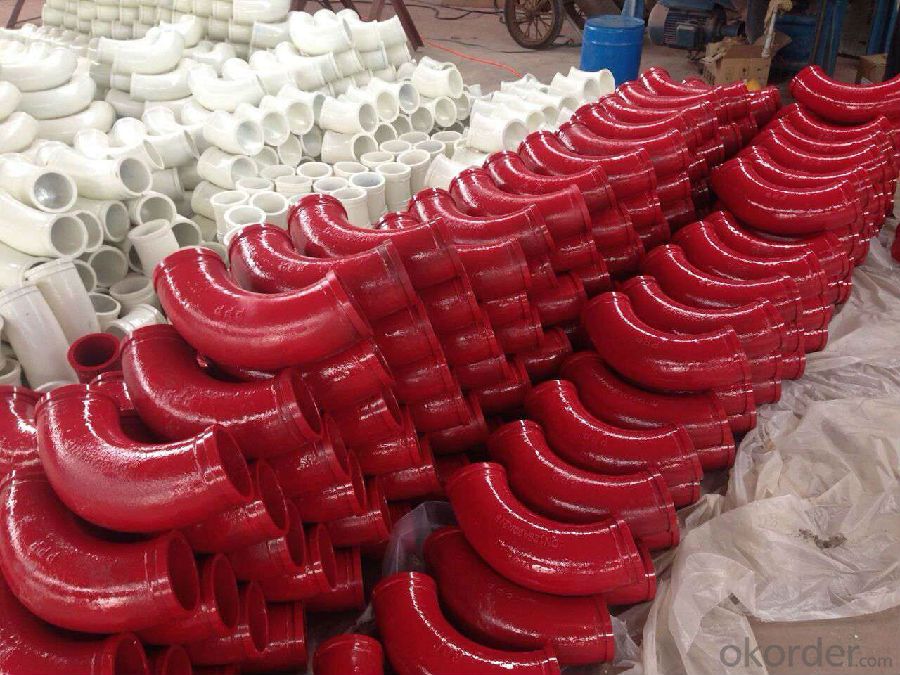
- Q:How can one identify the need for replacement of concrete pump spare parts?
- One can identify the need for replacement of concrete pump spare parts by observing any signs of wear and tear, such as cracks, leaks, or damage to the components. Additionally, a decrease in pump performance, unusual noises, or difficulty in operation can indicate the need for replacement. Regular maintenance and inspection can also help in identifying any potential issues with the spare parts that may require replacement.
- Q:What are the indications of a clogged or damaged concrete pump filter?
- Some indications of a clogged or damaged concrete pump filter include decreased pumping pressure, reduced flow rate, increased fuel consumption, and irregular or inconsistent concrete output. Additionally, if the concrete pump filter is severely clogged or damaged, it may cause the pump to overheat or shut down completely. It is important to regularly inspect and clean or replace the filter to ensure optimal performance and prevent any potential damage to the pump.
- Q:How do I properly maintain and replace filters in concrete pump spare parts?
- Properly maintaining and replacing filters in concrete pump spare parts is essential for ensuring optimal performance and longevity of your equipment. Here are some steps to follow: 1. Understand the different types of filters: Concrete pumps typically have different filters for various components, such as hydraulic oil, fuel, air, and water. Familiarize yourself with the specific filters used in your equipment. 2. Refer to the manufacturer's guidelines: Read the equipment manual and follow the guidelines provided by the manufacturer regarding filter maintenance and replacement intervals. This will help ensure that you are following the recommended practices. 3. Regularly inspect filters: Periodically inspect the filters to identify any signs of damage, clogging, or excessive debris accumulation. This can be done visually or by checking the pressure differential across the filter. If the pressure differential exceeds the recommended limit, it may indicate a need for filter replacement. 4. Clean or replace filters as needed: If the filters are clogged or dirty, they need to be cleaned or replaced. Some filters can be cleaned by blowing compressed air in the opposite direction of the airflow to remove debris. However, it is important to note that some filters are disposable and cannot be cleaned. 5. Use genuine spare parts: When replacing filters, always use genuine spare parts recommended by the manufacturer. This ensures compatibility and performance. 6. Follow proper handling and installation procedures: When installing new filters, make sure to handle them with clean hands or gloves to prevent contamination. Follow the correct installation procedure, such as tightening the filter housing to the recommended torque value. 7. Keep a maintenance schedule: Establish a regular maintenance schedule for filter inspection, cleaning, and replacement. This will help you stay on top of filter maintenance and prevent any potential issues caused by dirty or clogged filters. By following these steps, you can properly maintain and replace filters in concrete pump spare parts, ensuring that your equipment operates efficiently and has an extended lifespan.
- Q:How can one extend the lifespan of concrete pump spare parts?
- One can extend the lifespan of concrete pump spare parts by ensuring regular maintenance, proper lubrication, and cleaning after each use. Additionally, using high-quality spare parts and avoiding overloading or excessive pressure on the pump can also help prolong their lifespan.
- Q:How does the concrete pump work?
- When the pump is in place, support the leg and keep the body level and stable. When feeding with a distributor, the body shall not exceed 3 degrees of inclination
- Q:What are the indicators of a faulty concrete pump seal?
- There are several indicators that can suggest a faulty concrete pump seal. These include: 1. Leakage: One of the most obvious signs of a faulty seal is leakage of concrete or water around the seal area. If you notice any fluid seeping out from the seal, it is a clear indication of a problem. 2. Reduced pumping efficiency: A faulty seal can result in reduced pumping efficiency. If you notice that the concrete pump is not delivering the expected amount of concrete or is struggling to pump the material, it could be due to a seal issue. 3. Increased noise and vibration: A faulty seal can cause increased noise and vibration during the operation of the concrete pump. Unusual sounds or excessive vibration can indicate that the seal is not functioning properly, and further inspection may be required. 4. Premature wear and tear: If the seal is faulty, it can lead to premature wear and tear of other components in the pump system. This can be observed through the degradation of other parts such as gaskets, bearings, or pistons. Regular inspections can help identify such issues. 5. Inconsistent pressure: A faulty seal can result in inconsistent pressure while pumping concrete. If you notice variations in the pressure output or irregular flow of concrete, it may be a sign of a seal problem. 6. Excessive heat: Another indicator of a faulty seal is the generation of excessive heat in the seal area. If the seal is not functioning properly, it can cause friction and heat buildup, which can be felt or observed by touch. It is important to address any indication of a faulty concrete pump seal promptly to prevent further damage to the pump system and ensure the safety and efficiency of the operation. Consulting a professional or contacting the manufacturer for guidance and repair is recommended in such cases.
- Q:What is the function of a concrete pump hopper filter?
- Preventing damage and blockages, the concrete pump hopper filter's main function is to keep large debris, like rocks, out of the pump. It acts as a barrier between the hopper and the pump, ensuring that only properly sized aggregate and concrete mixture is pumped through. By reducing the risk of clogs and wear on the equipment, the filter helps maintain the pump's efficiency and longevity. Moreover, it removes unwanted contaminants, thus preserving the quality of the pumped concrete. In construction projects, the concrete pump hopper filter plays a crucial role in safeguarding the pump and ensuring a seamless and uninterrupted flow of concrete.
- Q:What are the different types of concrete pump pistons?
- In the construction industry, various concrete pump pistons are frequently utilized. These encompass the following: 1. Single-acting pistons: Smaller concrete pumps employ these pistons with a single working side. They propel the concrete out of the cylinder during the forward stroke and rely on gravity to retract the piston during the return stroke. 2. Double-acting pistons: Larger concrete pumps utilize these pistons with two working sides. They push the concrete out during the forward stroke and pull it back during the return stroke, thereby enhancing the pumping process's efficiency. 3. S-tube pistons: Trailer-mounted concrete pumps commonly employ these pistons, which are shaped like an S. They assist in regulating the concrete flow by directing it through a series of valves and pipes. 4. Rock valve pistons: These pistons are specifically designed for pumping concrete with larger aggregates. With their sturdy design, they can handle the more abrasive nature of such materials. 5. Gate valve pistons: These pistons employ a gate valve system to manage the concrete flow. They are frequently used in high-pressure applications and provide precise control over the pumped concrete's quantity. In summary, the selection of a concrete pump piston depends on various factors specific to the construction project, including the pump's size, the type of concrete being pumped, and the desired flow rate and pressure.
- Q:How often should concrete pump electric motors be inspected and maintained?
- Concrete pump electric motors should be inspected and maintained regularly to ensure their optimal performance and longevity. It is recommended to have them inspected at least once a year or every 500-1000 operating hours, whichever comes first. Additionally, regular maintenance should be carried out based on the manufacturer's guidelines and recommendations. This may include checking and replacing worn-out parts, lubricating moving components, cleaning dust and debris, and inspecting electrical connections for any signs of damage or loose connections. Adhering to a regular inspection and maintenance schedule will help prevent potential breakdowns, increase the lifespan of the motor, and ensure the concrete pump operates efficiently.
- Q:What are the different types of concrete pump clamps?
- There are several different types of concrete pump clamps, including snap clamps, bolt clamps, wedge clamps, and quick release clamps. These clamps are used to secure pipes and hoses in place and ensure a tight and secure connection during concrete pumping operations.
1. Manufacturer Overview |
|
|---|---|
| Location | |
| Year Established | |
| Annual Output Value | |
| Main Markets | |
| Company Certifications | |
2. Manufacturer Certificates |
|
|---|---|
| a) Certification Name | |
| Range | |
| Reference | |
| Validity Period | |
3. Manufacturer Capability |
|
|---|---|
| a)Trade Capacity | |
| Nearest Port | |
| Export Percentage | |
| No.of Employees in Trade Department | |
| Language Spoken: | |
| b)Factory Information | |
| Factory Size: | |
| No. of Production Lines | |
| Contract Manufacturing | |
| Product Price Range | |
Send your message to us
CONCRETE DELIVERY ELBOW PM TYPE 90DEG R275 DN125
- Loading Port:
- Tianjin
- Payment Terms:
- TT OR LC
- Min Order Qty:
- 100 pc
- Supply Capability:
- 10000 pc/month
OKorder Service Pledge
OKorder Financial Service
Similar products
New products
Hot products
Hot Searches
Related keywords
